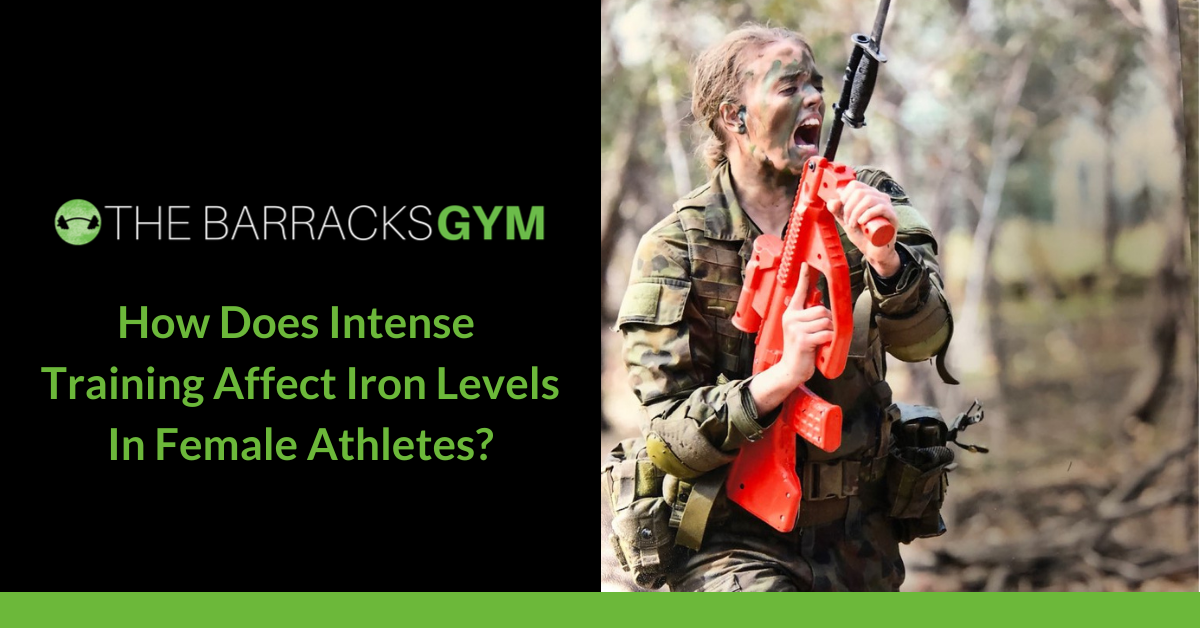|
Iron is a mineral involved in making red blood cells. Red blood cells carry oxygen around the body. When iron levels are low, it increases the possibility of anemia. Understanding the risks can be particularly important in female athletes, who have more demands on their iron levels than women who are not physically active or people that do not have a menstrual cycle. Intense training, and particularly cardiovascular training, can affect iron levels in female athletes. How Much Iron Do You Need? Among women, medical recommendations vary because of the role of iron in a woman's body. For women between the ages of 19-50, Nutrition Australia recommends 18mg of iron a day. For women over 50, that may no longer be experiencing a menstrual cycle, the recommendation drops to 8mg a day. Just as a comparison, 19+ men need 8mg per day throughout their lives. The considerable difference between men and women is due to the blood loss women experience monthly during their reproductive years. That number only increases during pregnancy and drops while breastfeeding. Who Is At A Higher Risk Of Deficiency? Iron is a critical mineral for anyone involved in a physically demanding industry. This might include performance sports or emergency services. Iron's role in transporting oxygen around the body in the red blood cells and the production of energy means that female athletes, in particular, are at risk. Female athletes with demanding intensive training regimes, such as those participating in an endurance sport, are at increased risk of compromised iron status. This is because of a heightened iron loss because of their menstrual cycle. Women who have particularly heavy periods are in an especially high-risk category. Intense training and cardiovascular endurance demands can mean that the oxygen demand is greater, and the likelihood of not having enough iron is more significant. High-intensity exercise, including endurance exercise, can create an iron deficiency of as much as 70% loss when compared with people that don't work out and are sedentary. This is because of heavy sweating during the training session and increased blood loss in the GI tract and urine. What Are The Symptoms Of Iron Deficiency? Knowing what to watch out for can help you catch any deficiencies early. The symptoms of iron deficiency anaemia, as outlined by Hematology.org, are:
How Is Iron Depletion Treated? Iron depletion can be treated by making some changes to your diet or through supplementation. Oral iron supplement intake should be kept below around 17mg per day. Some people experience some adverse side effects from doses higher than 20mg. Side effects can be quite severe, including constipation, feeling or being sick and abdominal pains. In children, it can be fatal, so all iron supplements should be kept out of reach. If your goal is to get your iron from your diet rather than from supplements, prioritising iron-rich foods will be essential. Red meats like beef or lamb are rich in iron. Provided you're not pregnant, liver is a fantastic option. If you don't eat meat, you can rely on legumes, like kidney beans, edamame and chickpeas. Nuts have some iron content, as do some dried fruit. Also, green leafy vegetables, especially the darker green ones, are rich in iron. Tips For Preventing And Treating Iron Depletion Women who are iron deficient and aspire to an athletic or physical career will have a decreased work capacity. They will also have a less efficient response to exercise as a stimulus. For this reason, iron deficiencies or anemia must be addressed as a priority. If you aspire to join the Australian Defence Force or the Police one day, understanding your body's iron needs will be paramount. Preventing iron depletion could be tackled through a balanced diet that includes red meat, whole grains, nuts and fruit. If dietary restrictions make it difficult to get sufficient iron, consider a reputable iron supplement. However, if you experience negative side effects such as stomach aches or sickness, you may need to speak with your doctor about an appropriate medical intervention. ConclusionIntense training can reduce iron levels in athletes because of increased sweating and increased blood loss in the urine and gastrointestinal tract. This is more prevalent in premenopausal women because of the blood lost through their menstrual cycle.
1 Comment
5/6/2021 03:47:26 am
I really love your style. Good job!
Reply
Leave a Reply. |
Most PopularTrusted PartnerWe work with the best service provider for Defence and First Responders.

Get SocialCategoriesArchives
January 2024
|
© COPYRIGHT 2024. ALL RIGHTS RESERVED.


 RSS Feed
RSS Feed